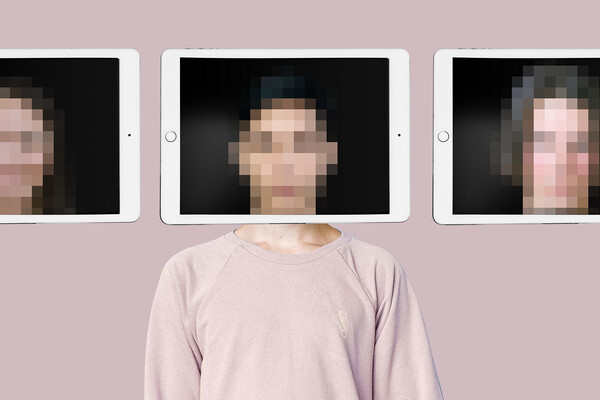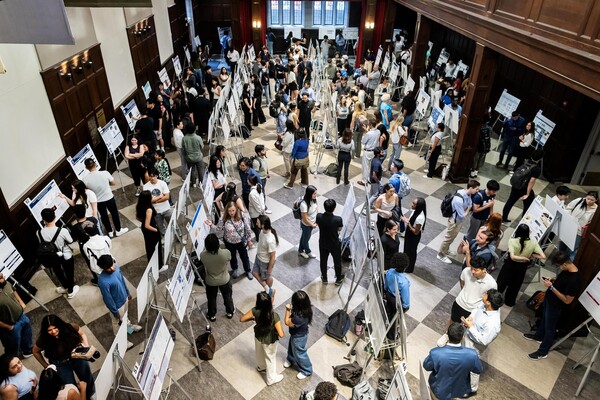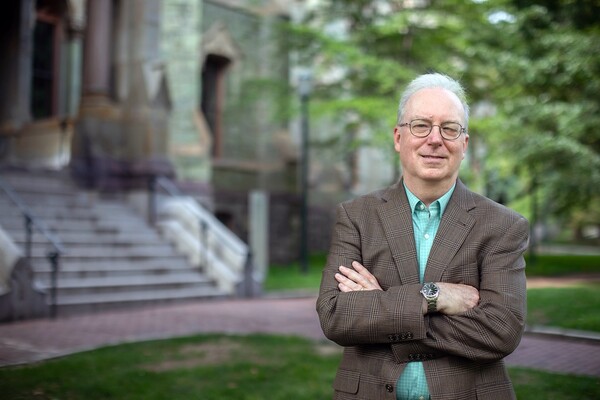
Image: Mininyx Doodle via Getty Images

Addressing a room of people with a passion for health equity, Marion Leary, director of innovation in the School of Nursing, went through the five stages of design thinking: empathize, define, ideate, prototype, and test.
Leary explained that the process begins with “talking to as many people as possible to understand their wants, desires, and needs,” to understand the problem from the perspective of people experiencing it. Researchers define a problem to address and start trying to come up with as many solutions as they can. As they pick one to prototype and test, Leary says, it’s important to keep end users involved in the process and to solicit likes, criticisms, questions, and ideas.
Penn Nursing held its second Summer Innovation Institute, with a focus on collaborative design and co-creation for health equity. The weeklong event brought in people from the Johnson & Johnson Nurse Innovation Fellowship Program, Penn Artificial Intelligence and Technology Collaborative for Healthy Aging (PennAITech), and Eidos LGBTQ+ Health Initiative, which is based at Penn.
This cross-cutting University event brought together faculty and staff from the School of Nursing, the Weitzman School of Design, the Perelman School of Medicine, the Wharton School, Penn Carey Law, and Penn Libraries, along with external experts, to help translate their knowledge into action and solutions for attendees leading on health care challenges.
“We’re hoping that they will reframe their design thinking to a much more human-centered and health-equity focus,” said Pamela Cacchione, the Ralston House Term Chair in Gerontological Nursing and a member of the planning committee. The event included a prototyping session and concluded with attendees pitching their projects and receiving feedback.
“Nurses should be prepared not only as collaborators on innovative areas, but we need to be prepared as leaders in moving that innovation forward,” said Penn Nursing Dean Antonia Villarruel. She said that innovation involves rigor and methods and approaches that include creativity and risk-tasking and that “part of the innovation mindset is moving from why we can’t to ‘how do we?’”
In one fireside chat, architecture lecturer Mikael Avery, clinical emergency medicine professor Neil Ray, and Penn Medicine senior project manager Catherine Shi talked about how the empathy and define phases function in their work.
Ray stressed the importance of being in the environment for which you want to design, noting that for one project the design team got the full experience of patient care and people running around by going into the emergency department. He said it was only after the team spent hours in the ED that the health care workers let their guard down and spoke more candidly.
When pandemic restrictions kept Shi from shadowing in person for a project on improving the process for specialists doing consulting services, she got creative. A collaborator had her on a call, “and they just had me in their pocket and would tell me what they were doing,” she said. “I was kind of like the mic in their ear, and they would just feed me information as they went around.”
A big part of empathy is having a beginner’s mindset, Ray said, and Avery added, “Even if you do know something, really ask the dumb questions; really ask the questions you think you know the answers to.” Moving into the define stage, he said there are moments of both expanding and culling ideas and “what you really want to look for is the things that aren’t obvious.”
Focusing on the ideation stage the next day, Penn Integrates Knowledge University Professor George Demiris spoke about his work on smart homes and aging. Demiris, who holds joint appointments in Penn Nursing and Penn Medicine, defined smart homes as “residences with embedded technology that facilitate passive monitoring of residents with a goal to enhance their safety, their quality of life, and their wellbeing.” That includes motion sensors and wearable technology.
In one project he described, a visualization of motion sensor firings showed that a retirement community resident was sleeping later and skipping more meals than a year prior, and in turns out that person was experiencing early cognitive decline. Demiris said the idea is for health care providers to look at the data so they can intervene earlier. Another project, sense4safety, uses depth sensors to calculate an older adult’s fall risk over time. Demiris’ team has compared this to a human expert who performs physical assessments, and they found a high correlation.
Demiris pointed to a lot of questions to consider about smart home technologies and their use. Do people feel their privacy is being violated? Is the technology accurate and dependable? Do participants worry that giving access to their data portal means their nurse or family will visit less? Do these solutions work for people with vision or hearing loss? Do people have the right kind of infrastructure, such as broadband, to access these technologies?
“I’m hoping that we can get more and more designers to recognize the need for digital inclusivity,” Demiris said, “so that that almost becomes a mandate for product design and reimbursement requirements.”
Eddy Marenco

Image: Mininyx Doodle via Getty Images

nocred

Image: Pencho Chukov via Getty Images

Charles Kane, Christopher H. Browne Distinguished Professor of Physics at Penn’s School of Arts & Sciences.
(Image: Brooke Sietinsons)